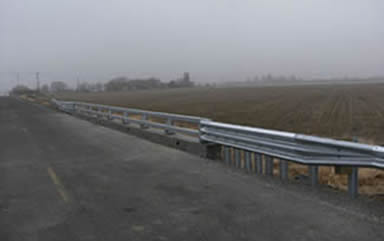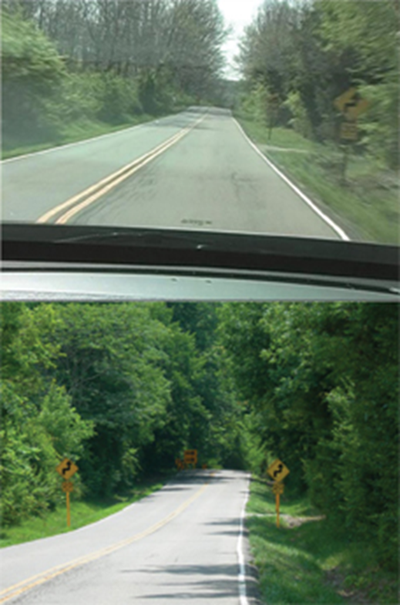Unique Accord in Washington State Helps State and Tribal Governments Work Proactively on Roadway Safety
The Washington practice is discussed after the following introduction about Tribal Government Involvement in the Strategic Highway Safety Plan process.
Other states in this SHSP/Tribal Government Noteworthy Practices series: MT, ND, SD
Involving Tribal Governments in the Strategic Highway Safety Plan Update Process - Approaches and Benefits
As States move toward achieving zero deaths on their roadways, the impact of motor vehicle crashes in tribal communities and on tribal roads cannot be overlooked. American Indian and Alaska Native (AI/AN) populations experience higher rates of fatalities associated with transportation than does the population as a whole. Crashes are also the leading cause of unintentional death for AI/AN ages 1-44.
Legislation requires that the SHSP is developed in consultation with major Federal, State, tribal, and local safety stakeholders (23 U.S.C.148 (a)(12)(A)). SHSPs must also consider safety needs of, and high-fatality segments of, all public roads, including non-State-owned public roads and roads on tribal land (23 U.S.C.148 (a)(12) (D)).
States and tribal governments are working together in an effort to reduce roadway injuries and fatalities in tribal communities. This includes collaborating during the State Strategic Highway Safety Plan (SHSP) process, an effort that brings together a diverse group of stakeholders to identify critical roadway safety challenges and establish potential solutions. Tribes are also developing Strategic Transportation Safety Plans of their own, which may allow access to additional resources such as the Tribal Transportation Program Safety Fund.
These noteworthy practices highlight the activities of four States and tribal communities to collaborate during and after the SHSP process. They contain several recurring themes:
- Establishing a government-to-government relationship between State offices and tribal governments is very effective because it establishes respectful lines of communication and agreed-upon approaches that facilitates discussion on roadway safety issues.
- Tribal involvement in the SHSP process insures tribal concerns and strategies are addressed in the SHSP.
- Tribal safety summits are an effective platform for information-sharing among tribes on roadway safety issues and often strengthen inter-tribal relationships.
- An established network for communicating between tribes and State agencies leads to better project coordination and delivery, lower project costs, stronger relationships, and better information sharing.
Washington
Background
Washington's Strategic Highway Safety Plan (SHSP), Target Zero®, first authored in 2000, aims to eliminate traffic fatalities and serious injuries by 2030. Based on data, Target Zero:
- Creates goals and objectives.
- Prioritizes the work that needs to be done to reach the goals.
- Offers countermeasures determined by research to be proven, recommended, or unknown.
For updating and implementing Target Zero, two State agencies take the lead in engaging with stakeholders representing the varied segments of Washington's population: the Washington State Department of Transportation (WSDOT) and the Washington Traffic Safety Commission (WTSC), an independent agency that serves as the State's Governors Highway Safety Association (GHSA) Traffic Safety Office.
Tribal Government participation has been a key strategy toward achieving Target Zero goals. Based on changing data, Washington's SHSP has been updated every three years since the 2007 update to ensure Target Zero goals are on track. Tribes in Washington have been increasingly involved in SHSP planning as Target Zero has become the guide for State, regional, county, and city agencies; Tribal programs; and private sector organizations involved with transportation and traffic safety.
Washington's Centennial Accord creates a collaborative environment for transportation and traffic safety efforts among Tribes and the State of Washington. Signed in 1989, the Accord established government-to-government relations between State and Tribal governments, in an effort to resolve disagreements before they reached the courtroom. With the structure of the Accord well in place, that framework of collaboration was applied to Tribal involvement in statewide transportation and traffic safety planning.
To engage the 29 federally-recognized Tribes in SHSP updates, Washington uses the following ongoing boards and organizations:
- Washington Indian Transportation Policy Advisory Committee (WITPAC), a WSDOT advisory committee, which meets quarterly.
- Tribal Transportation Planning Organizations, created and hosted by WSDOT, with meetings chaired by Tribal Governments.
- Tribal Traffic Safety Advisory Board (TTSAB), an advisory board to WTSC representing tribal leadership in the 4Es (Engineering, Education, Enforcement, and Emergency Response) of traffic safety, which meets monthly and works on education and enforcement projects.
- Northwest Association of Tribal Enforcement Officers (NATEO), a traffic safety partner unrelated to state government, which meets semi-annually.
Inclusive Highway Safety Planning
The Centennial Accord gives State agencies a protocol for officially interacting with Tribes, which includes a requirement that agencies have a tribal liaison on staff. The transportation and traffic safety boards and organizations create a framework that is used for communicating with Tribal staff involved with education, enforcement, engineering and Emergency Medical Services (EMS).
By way of example, for the 2016 Target Zero update, WTSC sent letters through the U.S. mail to Tribal leaders asking for Tribal representatives. A sample letter was distributed via email to members of WITPAC, TTPO, TTSAB, and NATEO. The communication system netted the three requested representatives, one for the top-level Steering Committee and two for the Project Team.
This method of identifying representatives is also an example of Washington's approach toward continuous improvement with each Target Zero update. Previously, WTSC identified Tribal representatives who had been enthusiastic and actively involved in other transportation safety efforts. This shift to casting a wider net to attract participants is a more transparent, open process and is another way to remind Tribal leadership of the importance of transportation and traffic safety to the quality of life in their communities.
The current update of Washington State's SHSP is focusing in part on expanding data-driven decisionmaking in Tribal transportation projects by inviting safety data experts to present Tribal data to the advisory boards and organizations. For example, to prepare for the current Target Zero update, during a TTSAB meeting:
- A WTSC staffer presented on Tribal fatalities (FARS) overlaid with U.S. census data by county.
- A WSDOT staffer presented on serious injury data on reservations, enhanced by the use of GPS coordinates in crash reports.
- A WTSC sub-grantee, currently conducting Tribal traffic safety assessments, presented on reservation fatality and serious injury data obtained from multiple sources including FARS, state collision database, CDC, Tribal police, and Tribal EMS.
Tribes will have a variety of ways to contribute to the 2016 version of Target Zero:
- Project Team representatives have asked Tribal planners to share with the SHSP team their safety plans, most of which were developed through grants from FHWA's Tribal Transportation Program Safety Fund.
- Tribes will be invited to the Partners' Meeting as usual. Representatives from 11 tribes attended the last Meeting.
- When writing teams are formed more Tribal representatives will be sought.
- When Target Zero is nearing completion, following the official consultation protocol, hardcopy drafts will be mailed to Tribal Chairs for comment. Additionally, electronic versions will be distributed for comment through the communications infrastructure of WITPAC, TTPO, TSAB, and NATEO.
When the 2016 SHSP is final, copies will be mailed to Chairs, and a link to the web version being broadly disseminated. TTSAB will distribute a news release on the 2016 version of Target Zero to the 29 Tribal newspapers and newsletters throughout Washington.
Key Challenges
All large organizations can develop silos, and Tribal government is no exception. Tribal planners work in environments that require collaboration, but it can be difficult to engage Tribal police and other programs in SHSP updates.
Data-sharing continues to be a major issue. State and Tribal planners need crash data on Tribal roads to make the case for federal and state grant money. But there are many challenges to data being freely shared between tribes and state and local highway agencies, including staffing and the resources it takes to process data. To help with the data-sharing challenge, WTSC funded an ongoing programming project that will allow each Tribe's codes to be uploaded in an automated fashion to the state's electronic ticketing and crash reporting system used by law enforcement. This will enable full functionality with a pull-down menu for jurisdiction. Tribes may choose to share only crash data with WSDOT/WTSC, which may remove some barriers to data-sharing.
Finally, limited funding is an ongoing barrier to creating Tribal educational and enforcement programs that could further Target Zero® goals and save lives on reservations.
Benefits Realized
Tribes and Washington State experience numerous benefits when Tribes are involved in SHSP updates, including the following:
- Tribes gain increased awareness on the importance of addressing roadway safety.
- Tribes take ownership of the final SHSP plan.
- Tribes are more likely to use the SHSP as a guide and source of information for their own transportation plans.
- Tribal planners, enforcement, and EMS become familiar with Target Zero strategies, which researchers have found to be effective and can be invaluable when applying for State grant funding.
- Tribal-State and Inter-Tribal relationships are strengthened.
- A broader understanding of the State's roadway safety requirements and needs in Washington is gained.
- Washington's data on behavioral factors in fatal and serious injury crashes is more complete and accurate allowing for more correct analyses.
See these other SHSP/Tribal Involvement Noteworthy Practices:
Contact
MJ Haught
Tribal Liaison
Washington Traffic Safety Commission
(360) 725-9879
MJHaught@wtsc.wa.gov



